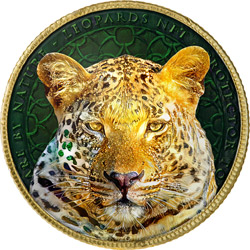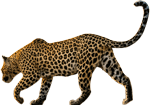Being involved in the behind-the-scenes media side of things, I don’t get to drive guests as often as I would like to these days.
Recently however, I was granted the opportunity to drive a photographic group with ranger Don Heyneke. Two families from Turkey were going to be visiting under the photographic guidance of Gerry Van Der Walt from Wild Eye Photographic Safaris, and I leaped at the chance of spending five days out on the road on a purely photographic mission.
Some rare sightings were had over the five day safari, including seeing a tiny reedbuck calf, which was a first for head tracker Rich Siwela, who has been here for 40 years! The giraffe bull drowning in Sable Boma Pan was obviously a big event, and although sad for the animal itself, we were privileged to witness the chain of events from its initial demise through the Matimba males discovering it and a whole host of vultures beginning to descend on the scene over the next few days.
The Tsalala pride crossed the river with tiny cubs, leopards launched into the treetops to feed on their kills, and no two drives were the same.
I’ll let the photos take you through the rest of the five days, but a big thank you to our new Turkish friends and Gerry for a spectacular few days out there.

On our first evening we headed towards where the Nkoveni female had hoisted a duiker kill in a small apple leaf tree. Luckily for us she saw some wildebeest approaching as night fell, and climbed up a more photography-friendly marula to keep an eye on them. She had a short sleep as well… f2.8, 1/1000s, ISO 2000

I included this photo more for the story. Richard Siwela, head tracker, age 68, still has the eyes of an eagle. We set out in the morning to look for the wild dogs, but there was no sign of them for a good hour and a half. We eventually found tracks right down in our south east as it began to get warm, and as the tracks headed into what is literally the most densely vegetated area on the property, with hard soil and difficult tracking conditions, I became pretty convinced we weren’t going to find them. Rich had faith though, and insisted he was still on the tracks, and then suddenly, two kilometres later, there they were! It was a truly brilliant tracking effort! Although fast asleep in the leaf litter, they got going after half an hour or so and came to a nearby pan to drink before settling down in the Tugwaan riverbed to sleep. f4, 1/5000s, ISO 500

A prime example of how one can get rusty when it comes to photography. I totally botched my settings in this sighting. This is the Nanga female descending a Jackalberry tree, and although the blur accentuates the movement, this wasn’t quite the photo I was going for… f4, 1/25s, ISO 640

Don and his guests photograph a giraffe drinking. We had parked far away so as not to disturb the giraffe, as they are notoriously skittish when going for a drink. f5, 1/800s, ISO 800

One giraffe quenches its thirst while a tender moment between two others is had in the background. f4,5, 1/4000, ISO 800

The characteristic head flick after a giraffe has drunk is a reflex action to prevent spiking blood pressure in the brain. f3.5, 1/4000s, ISO 800

While we waited for the Tsalala pride to get moving one evening, this young elephant bull crossed the river just downstream from us. f5, 1/1000s, ISO 640

The older female of the Tsalala pride stretches before heading back to her cubs on the other side of the river. f2.8, 1/1000, ISO 800

We parked here in anticipation of the lioness crossing at this exact point, although we were hoping for more of a dramatic leap than this! f3.2, 1/1600, ISO 1250

Needless to say, our hearts were in our mouths at this point… The lioness had made a move as if to pick up one of her cubs and carry it across, but she changed her mind and led them over instead. f2.8, 1/640, ISO 1600

The second cub leaped in just behind her sister, charging gamely across with her tail lashing and flicking water everywhere. f2.8, 1/1000, ISO 1600

As the lionesses headed up the opposite bank, the cubs trailed in their wake, with just this last bit of water to cross before heading out of the river. f2.8, 1/400s, ISO 2500

This herd of elephants was the third in succession that had all paraded past a local waterhole. They had all smelt the water and covered the last few hundred metres almost at a trot. f3.2, 1/640, ISO 640

These were some of the last moments of the big giraffe bull that drowned in the pan. Sadly his great bulk was too much for him to extract from the mud, and his strength failed him. f4.5, 1/1600, ISO 1000

That afternoon this was all that was to be seen. The giraffe’s head and neck had subsided below the water level, and the impala weren’t quite sure what to make of the carcass. They sounded the occasional alarm and were reluctant to come and drink. f3.5, 1/2500s, ISO 640

The Matimba males were sleeping nearby, and must have smelt the carcass as evening fell, for the dark maned male suddenly leaped up and ran off at speed. He must’ve lost the scent though, as for awhile both males paced up and down, sniffing constantly. They eventually approached the pan, but were very reluctant to get wet, and it was a good two hours before they entered to feed. f2.8, 1/320, ISO 3200

The dark maned male was the first to enter the water. This was probably because the male with the lighter mane had a much fuller belly, and didn’t need another meal as urgently. f2.8, 1/250s, ISO 3200

Shining a spotlight from the side creates this effect, and is easily done if one vehicle parks at 90 degrees from the other. f2.8, 1/160, ISO 3200

Ranger Don Heyneke and head tracker Richard Siwela. Rich is affectionately known as “Number 1”, and has claimed that title for his sole use, hence Don only being allowed to make a “Number 2” sign. f2.8, 1/500s, ISO 500

Photographic guide and founder of Wild Eye Photographic Safaris, Gerry van der Walt takes a short video on his iPhone of a cheetah walking by. f4.5, 1/400s, ISO 1250

We came over a rise in the deep south-west one morning, on a road that is almost never driven, at pretty much the farthest point on the map from the Londolozi camps, and there were the three Talamati males on a buffalo kill. Although they were very well fed and inactive as a result, this was still a wildly exciting moment for me and Rich, as neither of us had ever seen this young coalition before. f3.5, 1/400s, ISO 800

Don gets his vehicle into position to take some silhouette pictures of the young Tsalala lioness on a rock in the Sand River. I deliberately didn’t include any of my pictures of the lions in this sighting, as Don’s were infinitely better than mine and would just put me to shame! I’m sure we’ll see some of his on the blog soon… f2.8, 1/1000s, ISO 2000

We spent time with the Nanga female on our last night, and she spent time feeding on an old duiker carcass, which didn’t offer any photographic potential due to the dense foliage. She eventually descended and we managed to get some shots of her in the dry sands of the Manyelethi Riverbed. f2.8, 1/320s, ISO 2000






























Experiences of a lifetime truly amazing shots. I am so jealous and can’t wait to return.
Incredible photos!! Thank you!!
I just discovered your blog and am finding it riveting !.
I now live in Sydney Australia ex South Africa and love to return with Australian friends to the low veld etc .
As a matter of interest have there been any meaningful rains to help ease the drought. I was over in Jan and believe that there was some rain around Feb .
Anything meaningful since ?Cheers, James Walker ,Bondi Junction,Sydney .
Hi James,
We did have some late rain in March, but nothing to speak of since then. We are currently sitting on about half of our average rainfall, and unfortunately it looks like it might be done until next season. Following on from last year when we also had only half our avg. rainfall over the Summer, I’d say we are still under drought conditions.
Let’s hope next Summer brings some serious relief!
Regards
James
Thanks James,
Loved sharing. The 5 days on the road story.
Very sad about the old giraffe. Also loved the baby cubs following mum across the river, great photos.
Just fabulous fabulous photos and story, I almost feel like I’m there.
Thanks James, how the Madhaba cub has grown !
Hi Mike,
Yip, she’s getting big now! Probably won’t be long before we see her taking down small animals!
Best regards to you and the family!
Mashaba even 🙂
Great write up James! Was awesome sharing the experience with you and look forward to getting back to Londolozi as soon as possible!
Thanks Gerry – wait till you see some of Don’s photos of the lioness on the rock!
Looking forward to having you back here soon!
What is the best time to visit Londolozi?